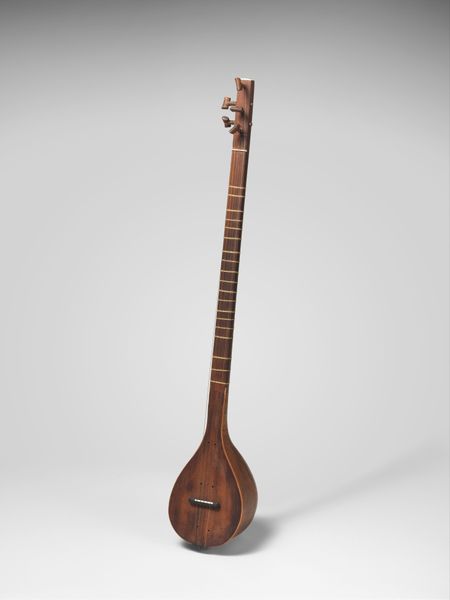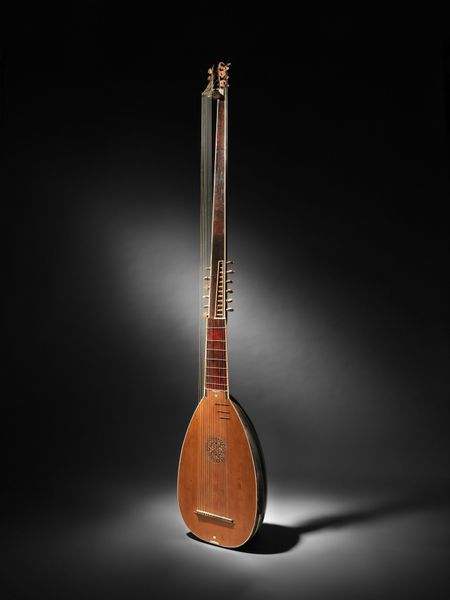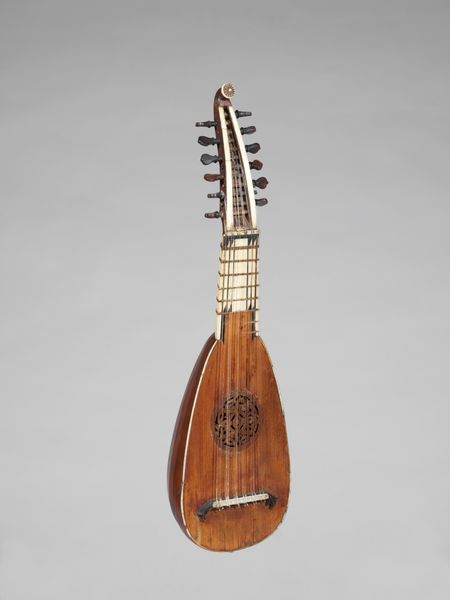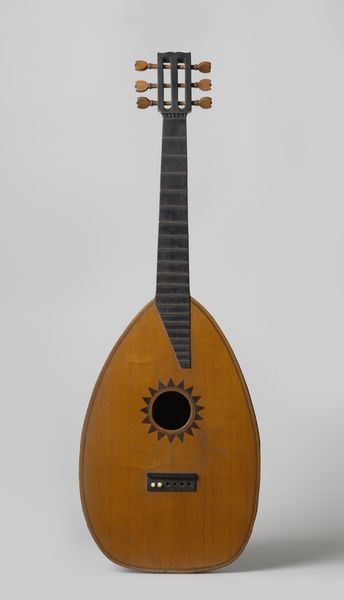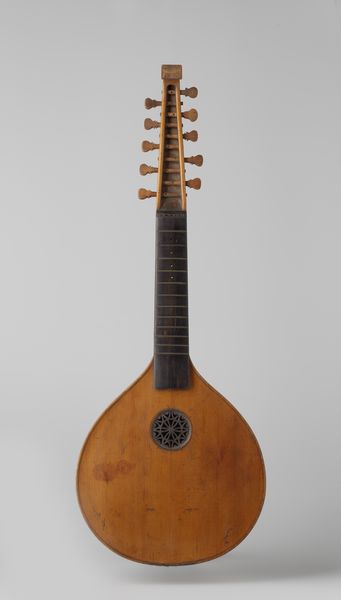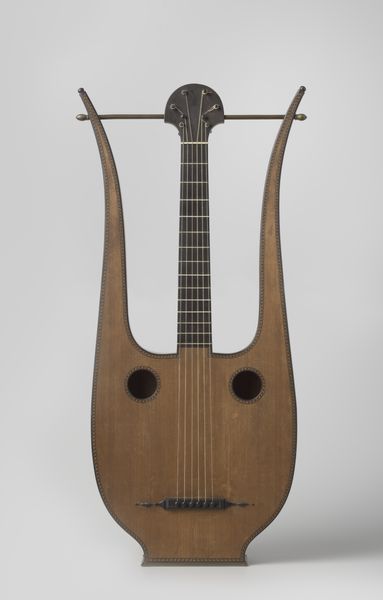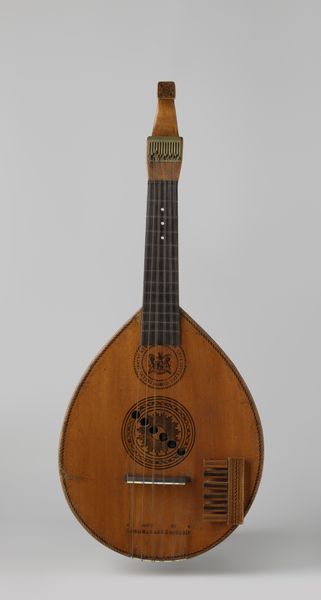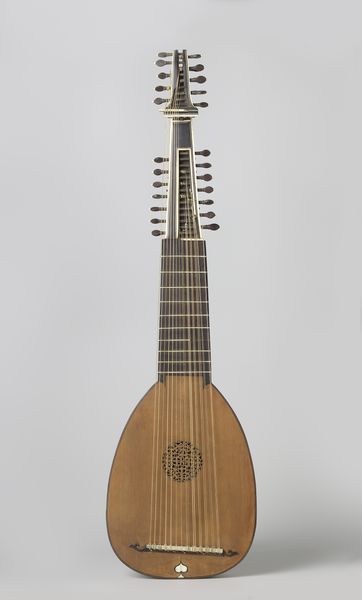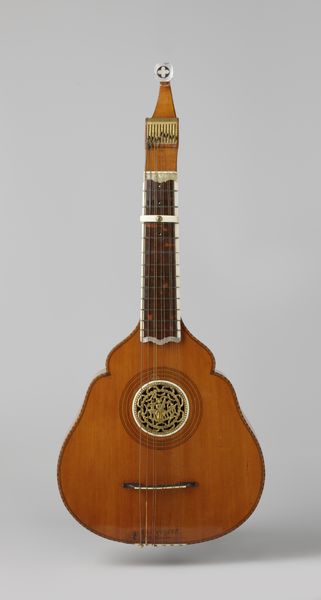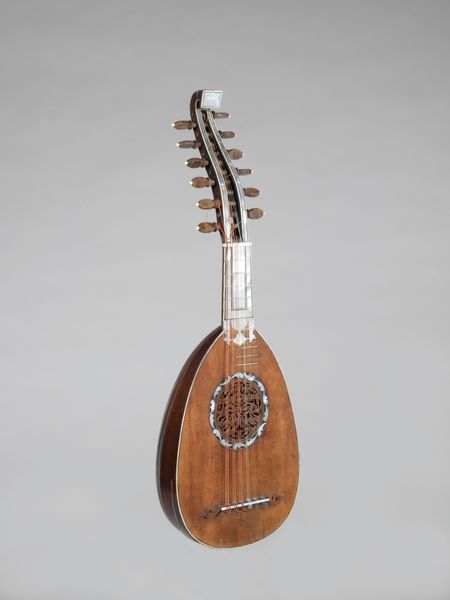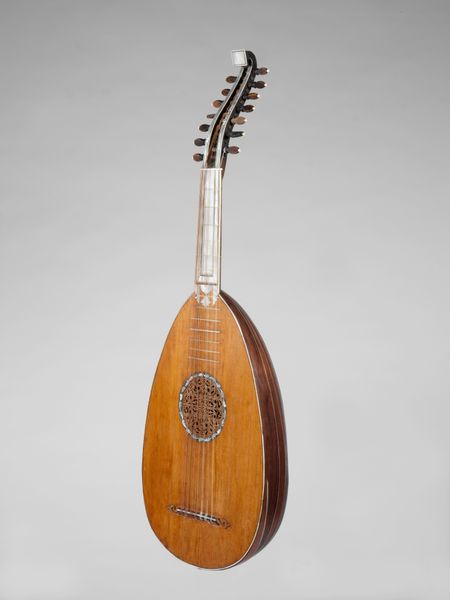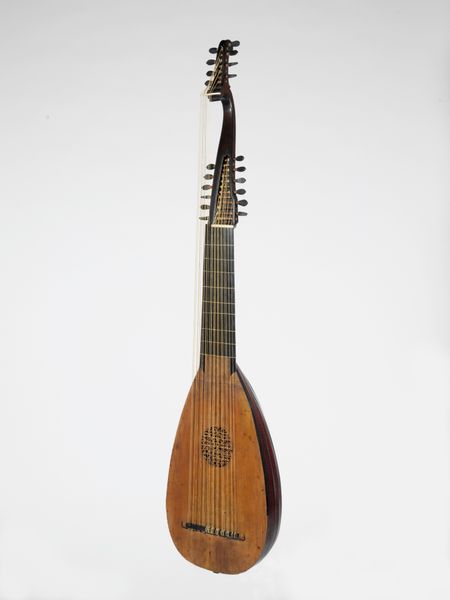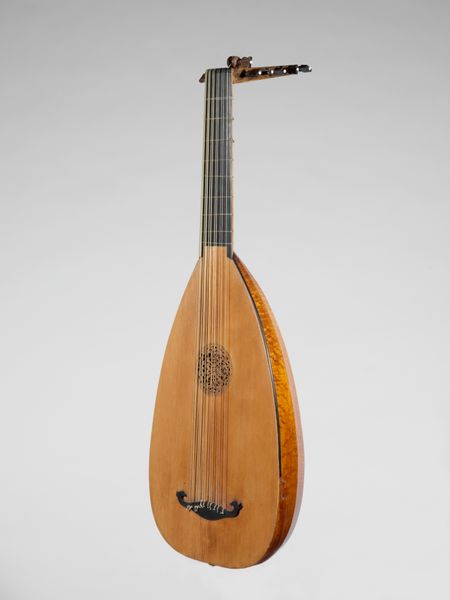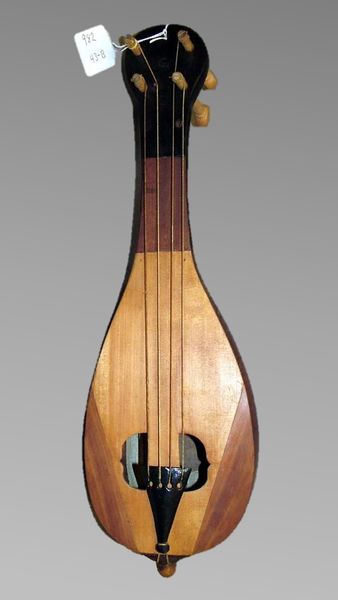
carving, wood
#
carving
#
asian-art
#
geometric
#
china
#
wood
#
musical-instrument
Dimensions: 37 1/16 × 8 7/8 × 1 7/8 in. (94.2 × 22.5 × 4.7 cm)
Copyright: Public Domain
Curator: Before us is a captivating wooden Pipa, crafted in China during the 19th century. The attention to detail is remarkable. Editor: It has such an immediate serenity. The light wood, the simple, elegant shape. I'm drawn to its contemplative nature. Curator: Let's begin by focusing on the form. Note the geometric arrangement of the frets against the pear-shaped body. How do these shapes interact to define the musical potential of the instrument? Editor: The presence of this pipa, particularly from the 19th century, sparks an important intersectional conversation. The economic relationship that produced fine crafts was often steeped in unequal systems of commerce. Do we celebrate the refined aesthetics without acknowledging its ties to potentially coercive trades of the period? Curator: But observe the materiality of the instrument itself! The way the carver has carefully chosen and worked with the wood grain; notice too the carving atop the neck near the tuning pegs. It's quite striking. How does this reflect a semiotic discourse of craft and design, regardless of what underpins this relationship you speak of? Editor: Yes, but let’s examine what role the pipa held within the rigid social stratifications of 19th century Chinese society. Who was afforded the leisure and economic means to play such an instrument, and who was systematically excluded? Considering such questions allow us to explore how instruments were emblems of both creativity and entrenched social status. Curator: You raise valuable points about the social landscape of its creation. But I contend we can also understand the piece through an exploration of structure and composition. Doesn't the linearity of the strings intersect and yet also accentuate the swelling curves of the sound box, producing, even visually, a delicate harmonic counterpoint? Editor: Of course. By considering it’s symbolic, historical placement, this instrument encourages us to consider the tangible evidence of cross-cultural interaction that reverberated through Asia and beyond. Curator: I appreciate you calling attention to these facets. In considering your insights along with my own, I've come away with an enhanced understanding. Editor: And I see how my focus on the historical background also highlights your appreciation for the instrument’s elegance and artistry.
Comments
No comments
Be the first to comment and join the conversation on the ultimate creative platform.
